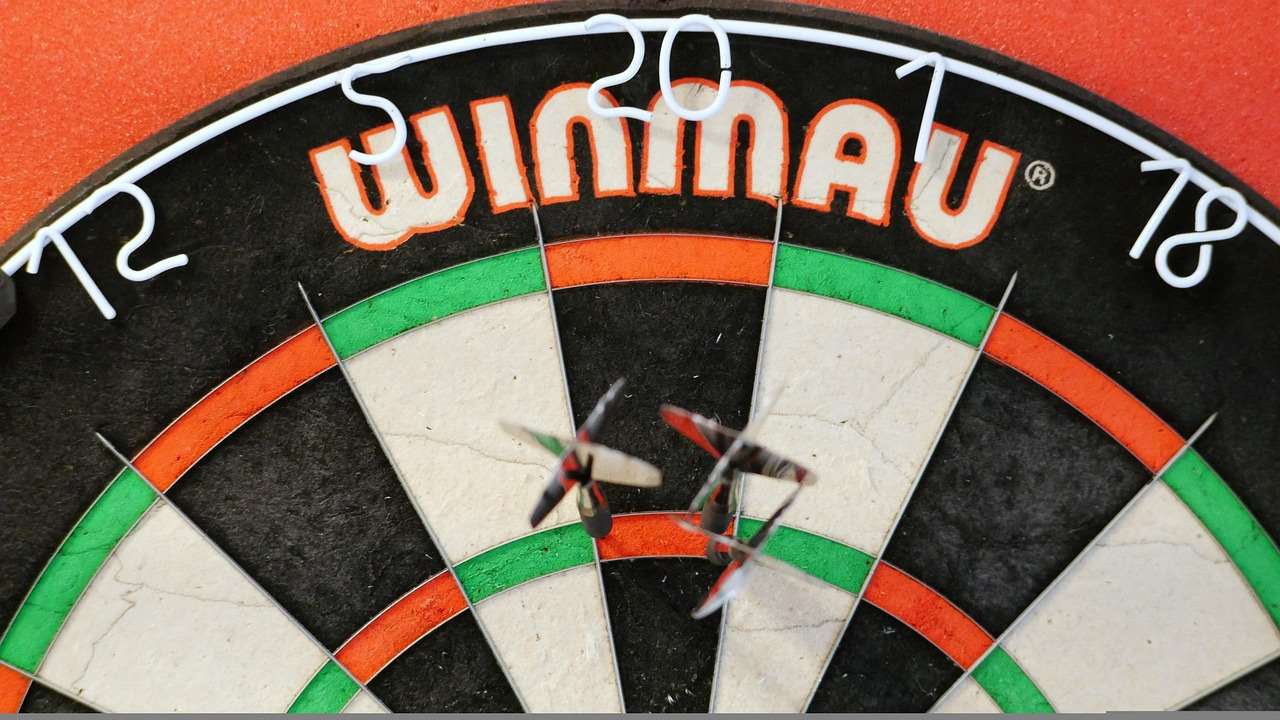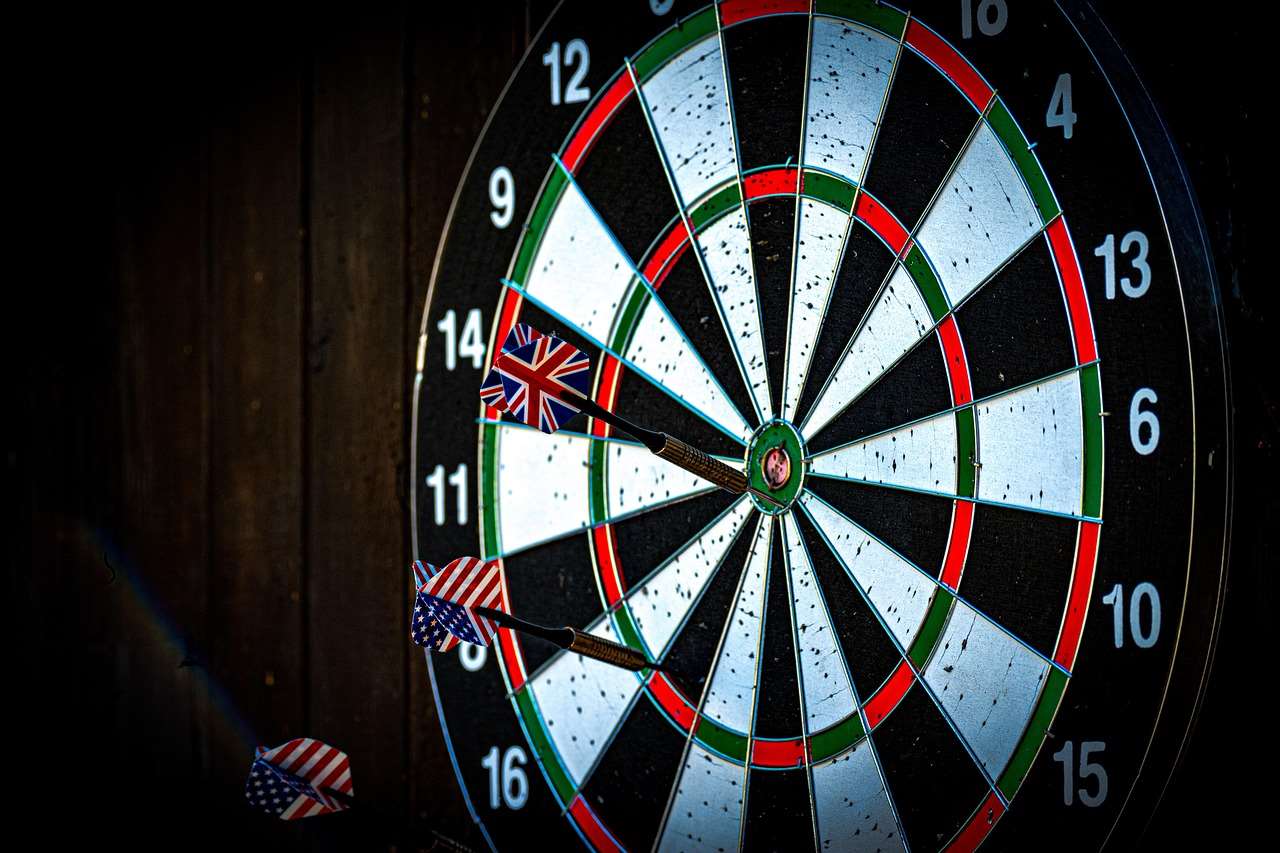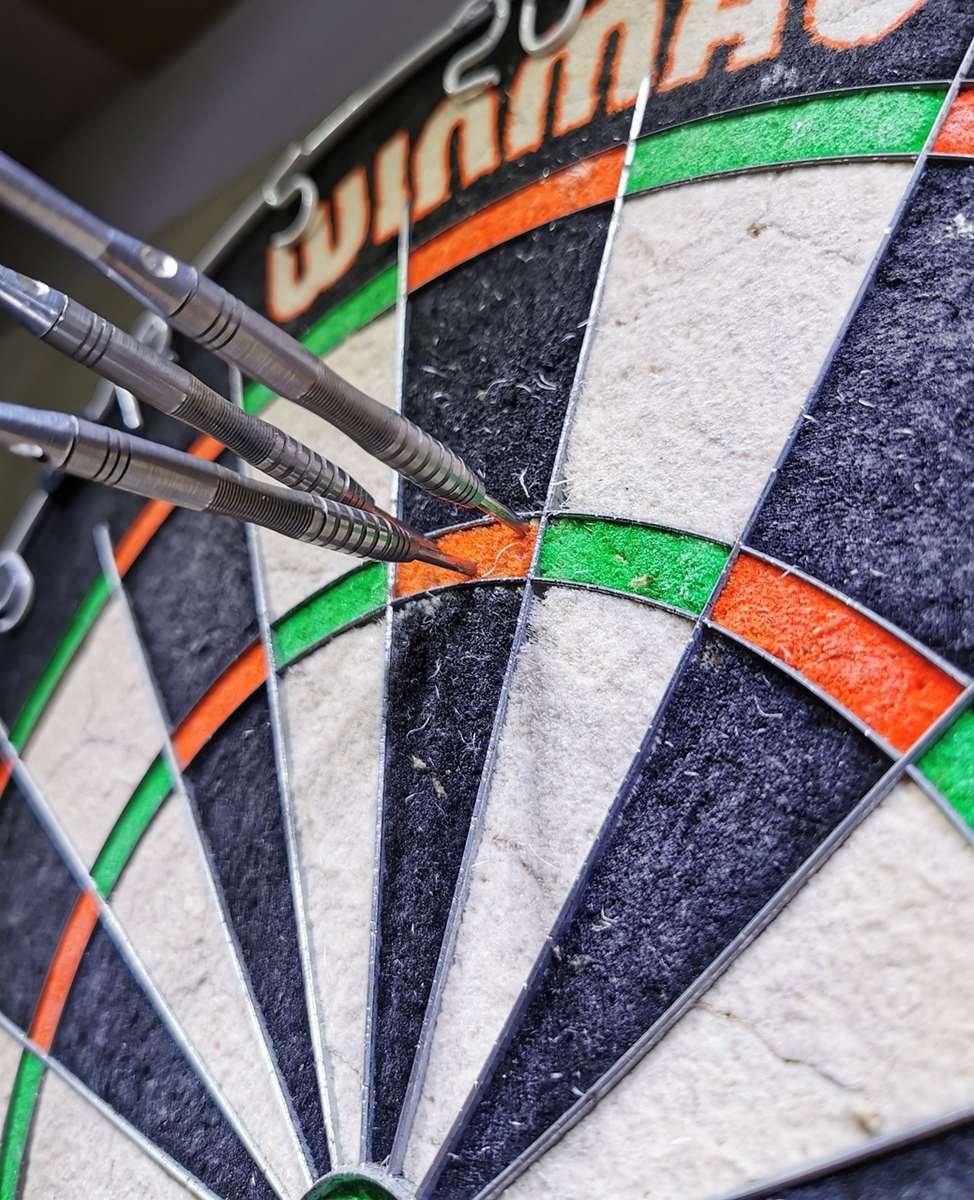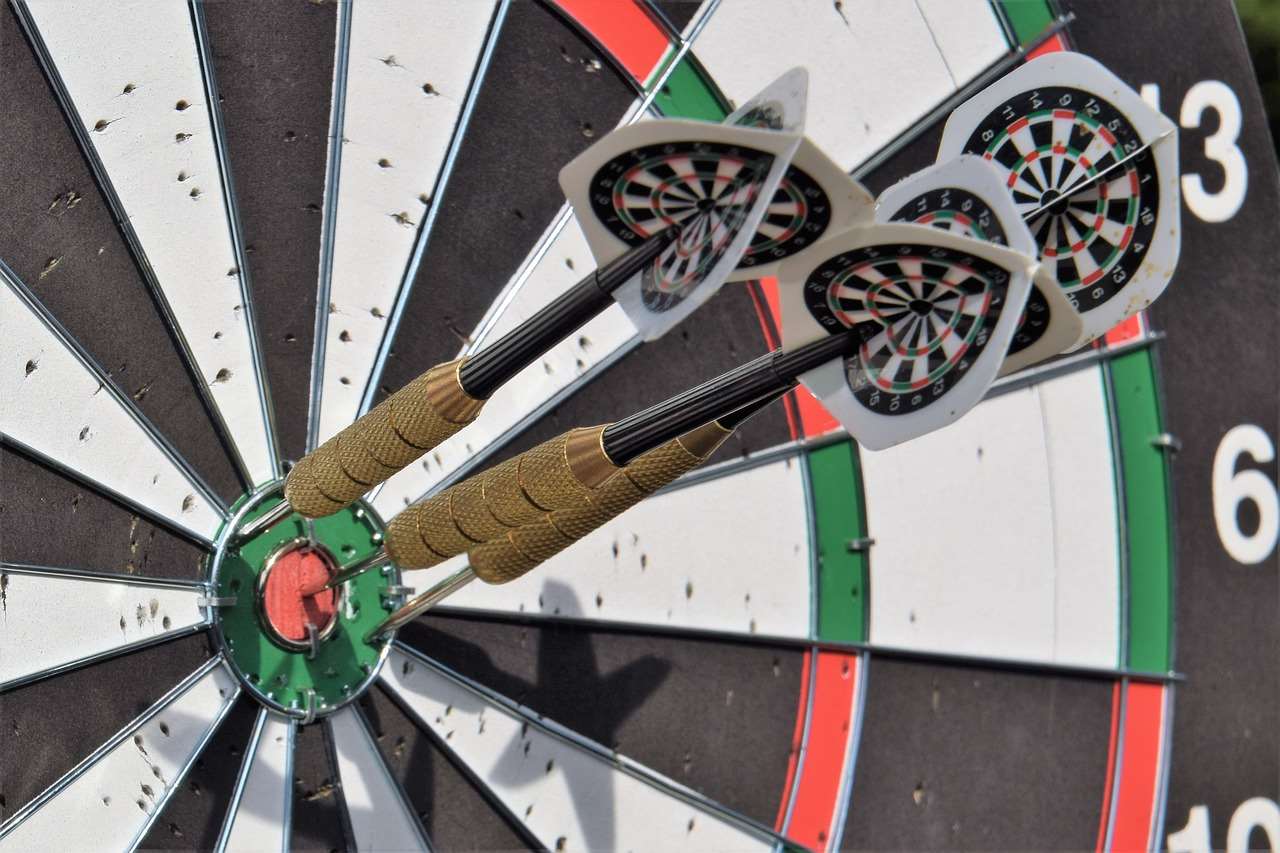Unlocking victory in Cricket darts requires mastering its unique rules and developing a strategic approach to both offense and defense; the ultimate guide to Cricket darts rules and strategy breaks down everything you need to know. This article will walk you through the game’s setup, scoring, winning conditions, and effective strategies to elevate your play.
⚠️ Still Using Pen & Paper (or a Chalkboard)?! ⚠️
Step into the future! The Dart Counter App handles all the scoring, suggests checkouts, and tracks your stats automatically. It's easier than you think!
Try the Smart Dart Counter App FREE!Ready for an upgrade? Click above!
Understanding the Basics of Cricket Darts
Cricket darts, a popular variation enjoyed by players worldwide, deviates significantly from traditional point-based games like 501. Unlike aiming for a specific score to reach zero, Cricket focuses on claiming and closing specific numbers. Knowing the nuances of this game is the first step in crafting your winning Cricket darts strategy.
The Numbers in Play
In standard Cricket, the numbers in play are 20, 19, 18, 17, 16, 15, and the bullseye (both the outer bull [25] and the inner bull [50]). These are the only targets that count towards your score or can be “closed.”
Marking and Claiming Numbers
To “claim” a number, you must hit it three times. These hits are often referred to as “marks.” These marks can be accumulated in various ways:
- Single: One hit counts as one mark.
- Double: Hitting the double ring counts as two marks.
- Triple: Hitting the triple ring counts as three marks.
For example, hitting a triple 20 in one turn instantly claims the 20s for you.

Scoring in Cricket
Once you’ve claimed a number (achieved three marks), any subsequent hits on that number add to your score, but only if your opponent hasn’t closed that number yet. This is where strategic decision-making becomes crucial. It is important to understand Basic Darts Fundamentals for Beginners to improve accuracy. The more points you get before closing a number, the better.
Closing a Number
To “close” a number, you must hit it three times after it has been claimed by you (or if it was already claimed by you at the start). Once a number is closed, neither you nor your opponent can score on it anymore. The number is effectively out of play.
Setting Up the Game
The setup for Cricket darts is straightforward but essential to ensure fair play.
Determining the First Player
Typically, players throw one dart each at the bullseye. The player whose dart lands closest to the bull starts the game. In case of a tie, players repeat the process.
The Dartboard Setup
Make sure the dartboard is hung correctly, with the center of the bullseye exactly 5 feet 8 inches (1.73 meters) from the floor. The oche (throwing line) should be 7 feet 9 1/4 inches (2.37 meters) from the face of the dartboard.
Winning the Game: The Ultimate Goal
To win a game of Cricket, you must:
- Close all the required numbers (20, 19, 18, 17, 16, 15, and bullseye).
- Have an equal or greater score than your opponent.
If you close all the numbers but are behind in points, you must either catch up in points before your opponent closes all the numbers or prevent them from closing all their numbers while you increase your score. Strategic blocking can be crucial in this scenario. You may consider using How to make darts fairer with handicap rules to make the game more accessible.
Advanced Cricket Darts Strategy: Offense and Defense
Mastering Cricket darts strategy requires a blend of offensive and defensive tactics. Here’s a breakdown of key strategies:
Offensive Strategies
- Focus on High-Scoring Numbers: Initially, prioritize claiming and scoring on 20s and 19s, as these offer the highest point potential.
- Quick Claiming: Aim for triples to claim numbers quickly. This allows you to start scoring points before your opponent can react.
- Maximize Scoring Opportunities: After claiming a number, continue hitting it to rack up points, but be mindful of your opponent’s progress.
Defensive Strategies
- Closing Opponent’s Numbers: If your opponent is scoring heavily on a particular number, prioritize closing it to shut down their scoring opportunities.
- Blocking: If you are ahead in points but behind in closing numbers, consider strategically closing numbers your opponent needs to win, even if it doesn’t benefit you directly.

Strategic Target Selection
Choosing which number to target next is a crucial decision. Factors to consider include:
- Your Opponent’s Progress: If your opponent is close to closing a number, you might want to prioritize closing it yourself.
- Your Scoring Advantage: If you have a significant point lead, focus on closing your remaining numbers.
- Accuracy and Consistency: Target numbers you are most confident in hitting consistently.
Reading Your Opponent
A good Cricket darts strategy also involves observing and understanding your opponent’s tendencies. Are they more accurate on certain numbers? Are they aggressive scorers or more defensive players? Use this information to tailor your strategy accordingly.
Adapting to Different Playing Styles
Be prepared to adapt your strategy based on your opponent’s playing style. If they are aggressive, you might need to play more defensively and focus on closing their numbers. If they are conservative, you can take more risks and prioritize scoring. Consider Adapting darts rules for beginners for a more casual experience.
Practice Drills for Cricket Darts
Consistent practice is essential for improving your Cricket darts strategy and execution.
Target Practice
Dedicate time to practicing hitting specific numbers, especially the 20s, 19s, and bullseye. Focus on consistency and accuracy.
Claiming and Closing Drills
Simulate game situations by practicing claiming numbers with three darts and then closing them. Vary the order and combinations of numbers.
Scoring Drills
Practice scoring points on claimed numbers. Set target scores and try to reach them in the fewest darts possible.

Mental Game in Cricket Darts
The mental aspect of Cricket darts is just as important as the physical skills. Staying focused, managing pressure, and maintaining a positive attitude can significantly impact your performance.
Staying Focused
Avoid distractions and maintain your concentration throughout the game. Focus on each dart and avoid dwelling on past mistakes.
Managing Pressure
Learn to handle pressure situations, such as when you need to hit a crucial dart to win the game. Practice under pressure to build your confidence.
Positive Attitude
Maintain a positive attitude, even when things aren’t going your way. Believe in your abilities and stay motivated to improve.
Common Mistakes to Avoid
Even experienced players make mistakes in Cricket darts. Here are some common pitfalls to avoid:
Ignoring Your Opponent
Failing to pay attention to your opponent’s progress and strategy can lead to missed opportunities and costly errors.
Over-Focusing on Offense
Neglecting defense and solely focusing on scoring can leave you vulnerable to your opponent’s attacks.
Poor Target Selection
Choosing targets without considering the overall game situation can waste darts and hinder your progress.

Variations of Cricket Darts
While the standard rules of Cricket darts are widely accepted, some variations exist. Some common variations include:
- Cut-Throat Cricket: Players score points against each other on numbers that are not closed.
- Team Cricket: Played with teams of two or more players, adding a collaborative element to the game.
Exploring Fun dart game variations with modified rules may bring another level of fun to your gaming sessions.
The Future of Cricket Darts
Cricket darts continues to evolve in popularity, with new players joining the game and innovative strategies emerging. Whether you’re a casual player or a seasoned competitor, the ultimate guide to Cricket darts rules and strategy provides a solid foundation for success.
Choosing the Right Darts and Equipment
Selecting the right darts and equipment can enhance your performance and enjoyment of the game.
Dart Weight and Material
Experiment with different dart weights and materials to find what feels most comfortable and suits your throwing style. Common dart weights range from 20 to 26 grams.
Dart Shafts and Flights
Experiment with different shaft lengths and flight shapes to optimize the dart’s trajectory and stability. Different combinations can affect accuracy and consistency.

Dartboard Quality
Invest in a high-quality dartboard made of sisal fibers for durability and optimal dart penetration. A good dartboard can last for years with proper care.
Conclusion
By understanding the rules, mastering the strategies, and consistently practicing, you can significantly improve your Cricket darts game. Remember to focus on both offense and defense, adapt to your opponent’s playing style, and stay mentally strong. So, grab your darts, step up to the oche, and put your newfound knowledge to the test! Now that you have read the ultimate guide to Cricket darts rules and strategy, it’s time to practice and refine your skills. What are you waiting for? Start playing and share your experiences!
Hi, I’m Dieter, and I created Dartcounter (Dartcounterapp.com). My motivation wasn’t being a darts expert – quite the opposite! When I first started playing, I loved the game but found keeping accurate scores and tracking stats difficult and distracting.
I figured I couldn’t be the only one struggling with this. So, I decided to build a solution: an easy-to-use application that everyone, no matter their experience level, could use to manage scoring effortlessly.
My goal for Dartcounter was simple: let the app handle the numbers – the scoring, the averages, the stats, even checkout suggestions – so players could focus purely on their throw and enjoying the game. It began as a way to solve my own beginner’s problem, and I’m thrilled it has grown into a helpful tool for the wider darts community.